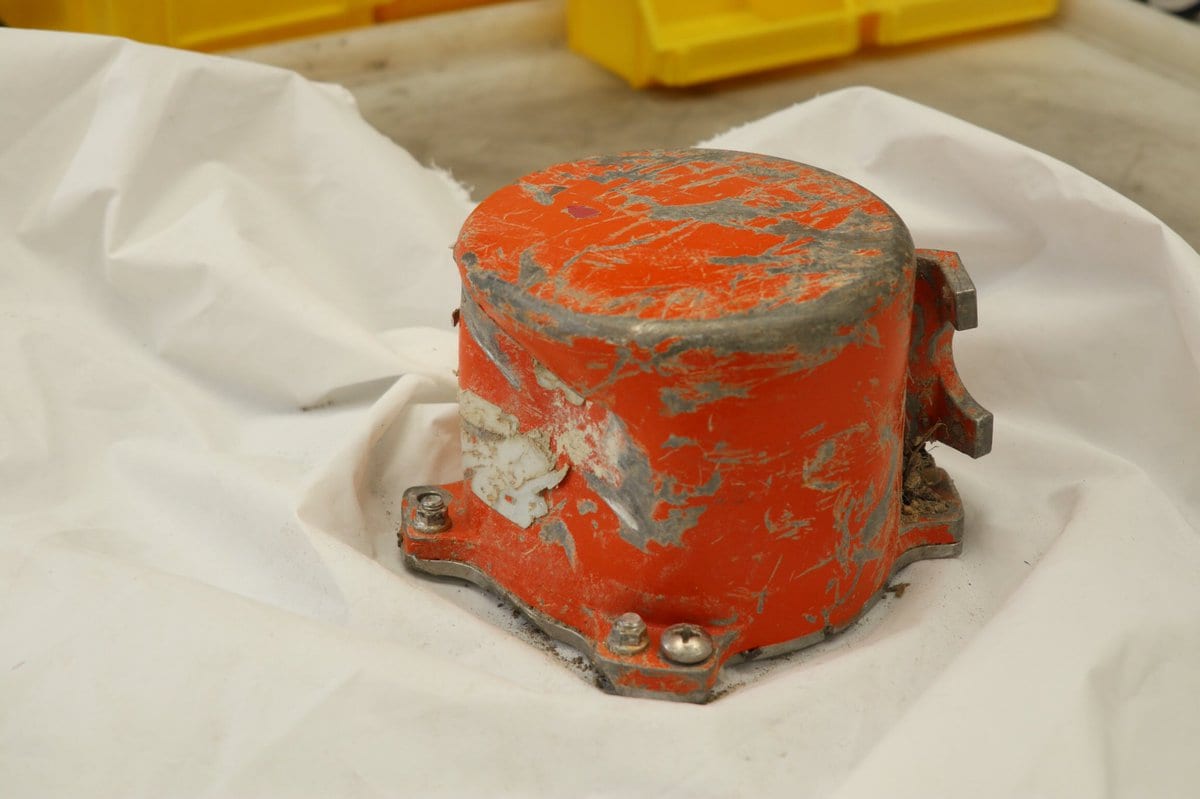
Ethiopian Airlines flight 302’s recovered cockpit voice recorder. (Ethiopian Accident Investigation Bureau)
Having finished its analysis of the flight data and cockpit voice recorders for the doomed Ethiopian Airlines flight 302, the French Bureau d’Enquêtes et d’Analyses (BEA) has determined that “clear similarities” exist between the crashes of ET 302 and October’s Lion Air flight 610, “which will be the subject of further study,” the organization said in a Monday statement.
That sentiment — as well as the notion of “clear similarities” was also mentioned by Ethiopian Minister of Transport Dagmawit Moges in a briefing on the crash. The investigation has been handed back over to Ethiopian authorities, who have announced a plan to publish a preliminary report within 30 days.
Neither Moges nor the BEA elaborated on what similarities between the two 737 MAX-8 accidents were found, but it is widely speculated to involve the trajectory of the planes as a result of Boeing’s maneuvering characteristic augmentation system (MCAS). MCAS is intended to automatically adjust the angle of the aircraft in situations where it has too much upward trim, particularly because the construction of the 737 MAX relative to other 737s makes it prone to upward pitch during turns. However, a faulty sensor can provide inaccurate angle-of-attack readings to the plane, causing the MCAS to engage when it shouldn’t, tipping the plane into a nose-dive that the pilot has to prevent.
The flight data tracks for both crashed flights indicate that they underwent a number of drastic altitude changes during their short flights, and the pilot of ET 302, Yared Getachew, called controllers to say he was having difficulties and request landing before they lost contact.
Boeing CEO Dennis Muilenburg released a new statement Sunday after Moges’ comments, saying that the company continues to work with investigators and reaffirming that software updates to its 737 MAX would be ready soon.
“As part of our standard practice following any accident, we examine our aircraft design and operation, and when appropriate, institute product updates to further improve safety,” Muilenberg’s statement reads. “While investigators continue to work to establish definitive conclusions, Boeing is finalizing its development of a previously announced software update and pilot training revision that will address the MCAS flight control law’s behavior in response to erroneous sensor inputs.”
Original Boeing documentation on the MCAS stated the system had authority to adjust the tail by .6 degrees, affecting a change of close to 5 degrees in the trajectory of the plane’s nose. A Seattle Times investigation has called MCAS readiness into question, however. In the wake of the Lion Air crash, Boeing updated its figure to 2.5 degrees of tail adjustment over which the MCAS had control. Further, that 2.5-degree limit resets each time the MCAS is triggered, according to an FAA engineer the Seattle Times spoke to.
In the case of the Lion Air crash, MCAS adjusted the plane’s nose downward 21 times. Each time the pilot corrected course, the system — still receiving inaccurate angle-of-attack data — adjusted it back downward. With the greater, 2.5-degree control afforded the system, only a couple uncorrected downward adjustments are enough to send a plane into a steep nosedive.
Within the next 30 days, more should be clear about Getachew’s struggles on ET 302, but the ascents and descents of the plane in the moments prior to crashing appear reminiscent of Lion Air 610. Ethiopian has gone on record more than once on the experience of the aircraft’s pilots: Getachew had 8,100 flying hours while the first officer had 350.
“According to ICAO regulations, any CPL holder can act as [first officer] in multi-engine jet commercial flight upon successful completion of the full type rating training on the type of A/C,” the airline said in a statement. “Ethiopian airlines, in its effort to enhance safety, established a crew-pairing policy whereby a less experienced FO flies only with highly experienced [captain] and vice-versa.”
For now, all commercial 737 MAX flights are grounded worldwide. Boeing has, however, resumed test flights, according to Woody’s Aeroimages, which covers the platform.
